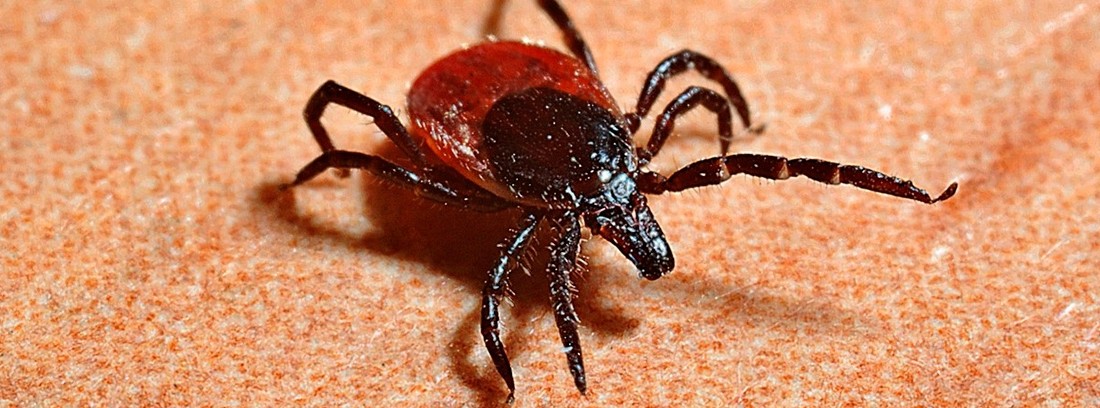Tick bites. How to act

The tick they are often attached to people's skin when walking through forests or meadows. In our midst, can transmit some diseasesFortunately, treatable, and generally not serious.
When the tick, which looks like a small spider, comes into contact with the skin, it usually moves first and looks for a warm, moist area, such as the neck, armpits, groin, or scalp. Then it latches onto the skin, begins to feed on blood, and its body swells up, taking on the appearance of a reddish-brown lentil. Its size is usually up to about 8 mm.
What diseases can ticks transmit?
In different areas of the world, ticks can transmit diseases caused by rickettsiae, bacteria that the insect can inoculate into the host's blood by digging into its skin. In every area of the planet there is a variant of endemic rickettsia responsible for causing a disease. In our country, the main disease that tick bites can transmit is the Mediterranean button fever, caused by . In some areas of Aragon and Catalonia, infection by another species, the. Tick-borne diseases in Spain are generally very benign and they are not as dangerous as those that exist in other areas, such as Lyme disease in the US. All rickettsioses cause similar symptoms, in the form of fever, joint pain, enlargement and swelling of the glands, or variables, as well as pain, redness and formation of a black crust at the point of entry of the infection, where the tick has bitten.
Rickettsioses are usually treated with the tetracycline type. Faced with a tick bite in our environment, this antibiotic can be taken as a preventive measure, although always under medical supervision. In general, its administration is reserved for cases in which the tick has been attached to the skin for a long time, when the bite takes place in summer, or when the extraction of the insect has been incomplete.
What should be done if a tick is observed attached to the skin?
If you have experience, or you have a person who knows how to do it, it is easy to remove the tick, but be very careful not to break it and that parts of the insect are not attached to the skin. The best way to do this is with tweezers, pulling it perpendicular to the skin, pulling slowly, and observing that no element remains on the skin.
What preventive measures can be taken to avoid tick bites?
The main preventive measure is go covered in long-sleeved clothing, ankle-length pants, and long socks if walking through a rural area where ticks may be present (areas of tall grasslands, dense vegetation, or very dense forests). It is even advisable to insert the legs of the pants into the socks, and always put the shirt inside the pants to prevent the insect from sneaking into these areas. You can spray your clothes or apply a repellent to your skin, but its effectiveness is not high, and its effect tends to wear off in a few hours. Observe your skin and clothing to identify a possible tick and remove it from the skin before it latches on.
If we suspect the presence of ticks in a particular garden, it is advisable to keep the grass or weeds trimmed and pruned. Dermatology Specialist
(Updated at Apr 13 / 2024)